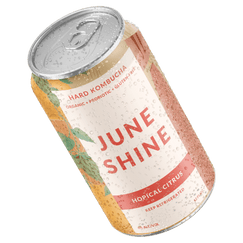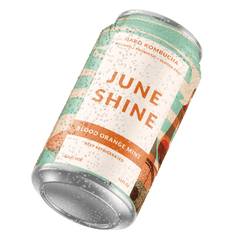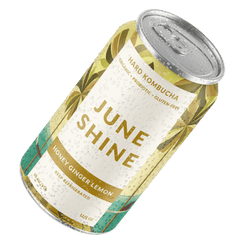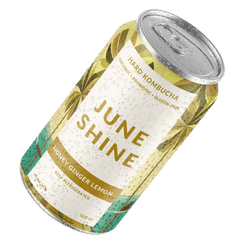Coconut Benefits: It’s Not Just for Cooking

Coconut is more than just a delicious ingredient in one of our signature drinks. It’s actually a superfood, and its power goes far beyond the kitchen.
Unmasking the Infamous Coconut
If we are looking at coconuts through the lens of botany, coconut is considered a fibrous one-seeded drupe or a dry drupe. But no one outside of botany (which is most people) knows what that is. So, using a loose definition, that means a coconut can be considered a fruit, seed, and nut.
A drupe, for the record, is any fruit with a thin skin and central stone containing the seed. Plums, cherries, and almonds are all examples of drupes.
Coconuts are composed of an outer exocarp, a fleshy middle mesocarp, and the hard, final endocarp layer surrounding the seed.
If you have seen a coconut at the store or market or enjoyed a drink out of one while on a tropical vacation, odds are it was brown and fuzzy. That fibrous husk is the endocarp. The other two layers have been removed by the time you get your hands on the coconut.
What’s Inside a Coconut?
The part of the coconut that most of us are here for is the raw white “meat” inside. Also known as the kernel, this part of the coconut has a firm texture and sweet flavor and is what most people think of when they picture coconut.
The white flesh is scraped out of the hard shell and shaved or grated into the flakes used in many dessert recipes. Coconut milk and cream are made by pressing the meat, and coconut oil is extracted from this part of the coconut as well.
If you’ve ever sipped on coconut water, that hydrating beverage comes from the inside of the coconut. Not to be confused with coconut milk, the water serves as a suspension for the coconut seed in the early stages of coconut growth. As the coconut grows, the water is dissolved into the rind of the coconut.
Coconut Palm Trees
Coconuts have been harvested in tropical regions around the globe for more than four thousand years. The exact origins are disputed, though.
Some believe that the drupe is native to South Asia, while others contend it originated in northwestern South America. Some fossil records even indicate that coconuts may have originated in New Zealand 15 million years ago, and older fossils have been found in other parts of the world. It’s likely that due to coconuts’ buoyancy, they floated to other parts of the world via the Pacific Ocean and flourished beyond their original home.
Wherever they came from, the coconut plant (or Cocos nucifera, if we feel like getting fancy) spread through the tropics and supported its inhabitants. Known to many as the “Tree of Life” for its versatility, all parts of the coconut palm can be used to sustain human life.
Coconut palms, the trees that bear coconuts, thrive on sandy soil, making them natural growers in tropical regions. They are unbranched, tall trees that can reach heights of over 100 feet.
They love abundant sunlight, regular rainfall, and long walks on the beach. Well, at least the first two things. They also require high humidity, which is why they fail to grow in Mediterranean climates. In the United States, only Florida and Hawaii have appropriate climates for coconut palm trees. Most of the world’s coconuts come from India, the Philippines, and Indonesia.
Coconut palms typically yield anywhere from 20 to 150 mature nuts a year. Some of those nuts are lucky enough to make their way into our Midnight Painkiller.
The Coconut: Nutritious and Delicious
Coconuts were once unpopular among the dietitian community due to their high fat content (57 grams), but they’ve become more prevalent in recent years for their nutrient-rich composition. Coconuts contain essential minerals, vitamins, and protein that are involved in many functions in your body.
The fatty acid in coconuts is mostly lauric acid, which increases good HDL cholesterol levels in your blood.
Coconuts are especially high in manganese, another essential nutrient for bone health and the metabolism of carbs, cholesterol, and proteins. The copper and iron found in coconuts help form red blood cells and selenium, an antioxidant that protects cells.
So, Do Coconuts Have Health Benefits?
Those who live on the Polynesian islands are considered the healthiest people on the planet. The biggest reason for this is their adherence to a healthy diet borne from their dependence on local flora and fauna like coconut trees and fish.
The meat found in coconuts is part of traditional medicine and is said to counteract poisons, kill bacteria, and protect against disease. Studies have shown that people who live on the Polynesian islands and eat coconut live longer lives.
The benefits of coconut really come down to the healthy fat we mentioned. The oil in the coconut meat boosts HDL, aka good cholesterol, while also lowering LDL, the bad cholesterol. The MCTs in coconut may also promote feelings of fullness from the high fiber content.
(Blood) Sugar How’d You Get So Fly
Speaking of fiber, due to the low carb levels and high fiber and fat, coconuts may help to stabilize blood sugar. The fiber content helps slow digestion and improve insulin resistance which in turn regulates blood sugar levels.
Coconuts and Antioxidants
It should come as no surprise that a drink with such promising health benefits would be rich in antioxidants. Gallic acid, salicylic acid, p-coumaric acid, and caffeic acid are all found in coconut. These antioxidants help protect cells and support several processes in the body.
The medium-chain fatty acids (MCFAs) found in coconut meat contain antimicrobial properties as well. These support better oral health and help prevent infections related to root canals and other tooth issues.
We’re not saying stop brushing your teeth and start eating coconut, but adding coconut to your diet might help kill some unwanted bacteria in your mouth with the added benefit of protecting your gums and teeth.
How Can You Start Eating Coconut?
One of the reasons coconut is so popular is that it is so versatile. Adding it to your diet is simple because it comes in many forms.
Coconut Oil
Coconut oil is generally used for cooking, but people also use it on their hands and skin. It’s a neutral cooking oil without a strong smell. It also has a very high smoke point and longer shelf life than other cooking oils. You can buy it solid at room temperature and use it to grease a pan like butter.
Additionally, coconut oil keeps your skin hydrated, which has many benefits for your skin’s health by keeping out bacteria and promoting the healing of scars and other wounds.
Coconut Milk
Coconut milk is one of the liquids found inside a coconut. It comes from the fruit’s white meat and can be thick or thin depending on the manufacturer’s process for collecting it.
It is grated out of the coconut flesh of mature coconuts and then squeezed through a cheesecloth to extract the liquid. The thicker the milk, the fattier the liquid.
You can purchase coconut milk in a can for cooking or in a carton for drinking. People generally use coconut milk as a slightly sweet alternative to regular milk.
Coconut Water
Maybe the most popular part of the coconut is its water. It is low in calories, free from fat and cholesterol, has tons of potassium, and is super hydrating.
Coconut water is bursting with natural electrolytes and natural sugar; both are much-needed fuel to a dehydrated body.
Be careful to avoid brands that add sugars to coconut water, though. Its natural sweetness and nutty flavor are all it needs, don’t mess with perfection.
Tropical, Flavorful, and Powerful
The coconut may look unassuming from the outside, but inside, it’s packed with vitamins, nutrients, and tons of flavor. Whether you’re using it to whip up a light dinner or you’re enjoying a hard kombucha inspired by a tropical cocktail, we’re sure you’ll find something to love about the mighty coconut.
Sources:
5 Health and Nutrition Benefits of Coconut | Healthline
Coconut: Is It Good for You? Pros and Cons, Nutrition Information, and More | WebMD.com
7 Amazing Benefits of Coconuts - Diet | TheHealthJournals
Coconut 101: Nutrition Facts, Health Benefits, Beauty Benefits, Recipes | EverydayHealth.com
Question Is a coconut a fruit, nut or seed? | LOC.gov
Deep history of coconuts decoded | The Source
Coconut | New World Encyclopedia
Top 9 Coconut Nutrition facts and Health benefits | Nutrition and You
Manganese in health and disease | Nih.gov
Coconut oil consumption and cardiovascular risk factors in humans | nih.gov
Coconut and Diabetes - Effect on Blood Glucose, Health Benefits | Diabetes.co.uk.






